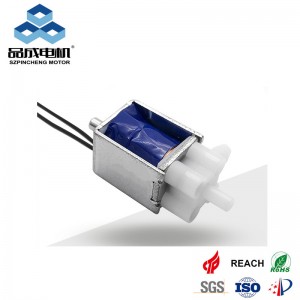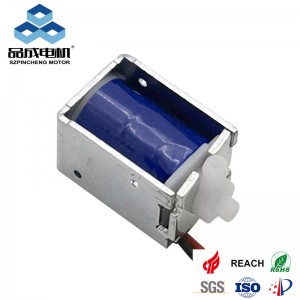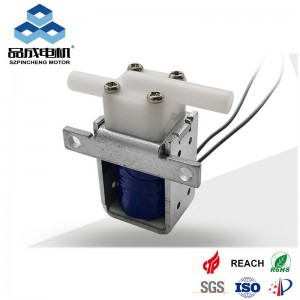Miniature solenoid valves are critical components in automation systems, medical devices, and aerospace applications, where rapid response times (often <20 ms) directly impact performance and safety. This article explores actionable strategies to optimize their response time, supported by technical insights and real-world examples.
1. Optimize Electromagnetic Coil Design
The solenoid coil generates the magnetic force to actuate the valve. Key improvements include:
-
Increased Coil Turns: Adding more wire windings boosts magnetic flux, reducing activation delay14.
-
Low-Resistance Materials: Using high-purity copper wire minimizes energy loss and heat generation, ensuring stable operation3.
-
Dual-Coil Configurations: A study by Jiang et al. achieved a 10 ms response time (from 50 ms) using a double-winding design, ideal for aerospace applications requiring ultra-fast actuation4.
Case Study: A flight-ready valve reduced response time by 80% through optimized coil geometry and reduced inductance4.
2. Refine Valve Structure and Mechanics
Mechanical design directly affects actuation speed:
-
Lightweight Plungers: Reducing moving mass (e.g., titanium alloys) lowers inertia, enabling faster movement314.
-
Precision Spring Tuning: Matching spring stiffness to magnetic force ensures quick closure without overshoot3.
-
Low-Friction Guides: Polished valve sleeves or ceramic coatings minimize sticking, critical for high-cycle applications1.
Example: CKD valves improved response by 30% using tapered valve cores and optimized spring preload3.
3. Advanced Control Signal Optimization
Control parameters significantly influence response:
-
PWM (Pulse Width Modulation): Adjusting duty cycles and delay times enhances actuation precision. A 2016 study reduced response time to 15 ms using 12V drive voltage and 5% PWM duty8.
-
Peak-and-Hold Circuits: Initial high-voltage pulses accelerate valve opening, followed by lower holding voltage to reduce power consumption14.
Data-Driven Approach: Response surface methodology (RSM) identifies optimal voltage, delay, and duty ratios, shortening response time by 40% in agricultural spray systems8.
4. Material Selection for Durability and Speed
Material choices balance speed and longevity:
-
Corrosion-Resistant Alloys: Stainless steel (316L) or PEEK housings withstand harsh media without degrading performance114.
-
High-Permeability Cores: Ferromagnetic materials like permalloy enhance magnetic efficiency, reducing energization time4.
5. Environmental and Power Management
External factors require mitigation:
-
Stable Power Supply: Voltage fluctuations >5% can delay response; regulated DC-DC converters ensure consistency314.
-
Thermal Management: Heat sinks or thermally stable coils prevent resistance drift in high-temperature environments14.
Industrial Application: A packaging machine achieved 99.9% uptime by integrating temperature-compensated drivers3.
Case Study: Ultra-Fast Valve for Medical Devices
A medical device manufacturer reduced response time from 25 ms to 8 ms by:
-
Implementing dual-coil windings4.
-
Using a titanium plunger and low-friction guides1.
-
Adopting PWM control with 14V peak voltage8.
Conclusion
Optimizing miniature solenoid valve response time requires a holistic approach:
-
Coil and core redesign for faster magnetic actuation.
-
Mechanical tuning to reduce inertia and friction.
-
Smart control algorithms like PWM and RSM.
-
Robust materials for reliability under stress.
For engineers, prioritizing these strategies ensures valves meet stringent demands in robotics, aerospace, and precision medicine.
you like also all
Post time: Apr-02-2025




